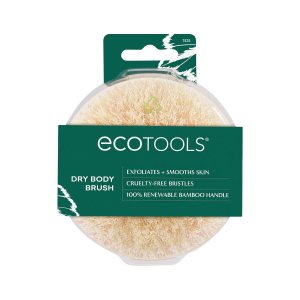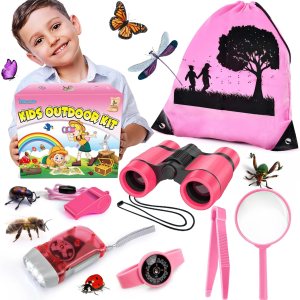Bringing a bottle into your baby’s feeding routine can feel like a big milestone – and sometimes a tricky one! Whether you’re easing back into work, introducing pumped milk, or simply looking to share feeding duties, getting your little one to take a bottle smoothly can save a lot of stress for both of you. The good news? With a few simple tips and a bit of patience, you can help your baby get comfortable with bottle-feeding in no time. In this post, we’ll share easy, practical advice to make bottle time a happy, fuss-free experience for you and your baby. Let’s dive in!
Table of Contents
- Choosing the Right Bottle and Nipple for Your Baby
- Creating a Calm and Comfortable Feeding Environment
- Timing is Everything Knowing When to Introduce the Bottle
- Gentle Techniques to Encourage Bottle Acceptance
- Insights and Conclusions
Choosing the Right Bottle and Nipple for Your Baby
Selecting the right bottle and nipple can make a world of difference in your baby’s feeding experience. Start by considering materials—glass, BPA-free plastic, or silicone—each has its perks. For instance, glass is eco-friendly and easy to clean, while silicone nipples are ultra-soft and mimic the natural feel of breastfeeding. Don’t forget to check the nipple flow rate; newborns generally do better with a slow flow to prevent choking and discomfort. As your baby grows, you can experiment with medium or faster flow nipples to match their increasing appetite.
Here are a few tips to keep in mind when choosing the best bottle and nipple combo:
- Shape and size: Some babies prefer wide-neck bottles that feel more like the breast, making the transition smoother.
- Anti-colic features: Bottles with vents or valves can help reduce gas and fussiness by preventing air ingestion.
- Easily cleaned parts: Go for bottles with fewer pieces to simplify washing and sterilizing.
- Trial and error approach: Be patient, as your baby might need to try a few options before finding their favorite.
Creating a Calm and Comfortable Feeding Environment
When feeding your baby with a bottle, setting the right atmosphere can make all the difference. Choose a quiet, cozy spot where distractions are minimal. Dim the lights slightly and consider playing soft, soothing music or white noise to help your little one relax. Holding your baby close, in a natural and comfortable position, promotes bonding and helps them feel secure as they transition to bottle feeding.
Creating a consistent routine also comforts your baby and encourages a positive feeding experience. Incorporate simple touches like a favorite blanket or a gently rocking chair. Some other tips to enhance the environment include:
- Keeping the feeding space warm– A chilly room can make your baby fussy during feeding time.
- Preparing the bottle in advance– Avoid rushing, so feeding time stays calm and enjoyable.
- Maintaining eye contact– This reassures your baby and promotes connection.
Timing is Everything Knowing When to Introduce the Bottle
Introducing a bottle to your baby too early or too late can make the transition more challenging than it needs to be. Most experts recommend waiting until your baby is around 4 to 6 weeks old before offering a bottle. By this time, your little one has usually established a consistent breastfeeding routine, making it easier for them to accept the new feeding method without confusion. However, every baby is unique, so be mindful of their cues and readiness.
When you’re ready to start, consider these tips to find the perfect moment:
- Pick a calm time: Choose a moment when your baby is not overly hungry or fussy, ideally when they’re relaxed and alert.
- Involve a partner or caregiver: Babies sometimes resist a bottle from mom if they associate nursing with her, so a different caregiver can help ease the process.
- Start slow and steady: Gradually introduce small amounts of milk via bottle to help your baby get used to the new feeding style without frustration.
Gentle Techniques to Encourage Bottle Acceptance
Introducing a bottle to your baby is all about patience and gentle encouragement. Begin by offering the bottle when your little one is calm and slightly hungry, rather than starving or overly full. Hold your baby in a comforting, semi-upright position, mimicking the closeness they enjoy during breastfeeding. To keep things soothing, try warming the milk to body temperature and use a nipple flow that matches your baby’s sucking pace, ensuring a natural, stress-free transition.
Small changes in approach can create a big difference. Consider these welcoming gestures:
- Let a familiar person offer the bottle, especially if Mom usually breastfeeds, so the baby associates the bottle with comfort rather than change.
- Use gentle, slow movements and pause frequently to give your baby a moment to adjust and breathe.
- Allow your baby to explore the bottle by touching and playing with it, building curiosity and acceptance.
- Maintain skin-to-skin contact to provide reassurance and warmth, strengthening the bond during feeding time.
Insights and Conclusions
Thanks for sticking with me through these easy tips for getting your baby to take a bottle successfully! Remember, every little one is unique, so don’t be discouraged if it takes a bit of time and patience. With a little practice, some gentle encouragement, and the right approach, bottle feeding can become a smooth and happy experience for both you and your baby. Here’s to many cozy, nourishing moments ahead — you’ve got this!
Related Products
-
Sale!
Gifts for Mom, Mother’s Day Gift Basket for Mom – …
Mom Original price was: $23.99.$12.99Current price is: $12.99. -
Sale!
Kids Explorer Kit & Bug Catcher Kit, Camping Gear …
Kids Original price was: $12.99.$11.99Current price is: $11.99. -
Ultra Performance 3 Pack Fleece Active Tech Jogger…
Clothing $37.99







